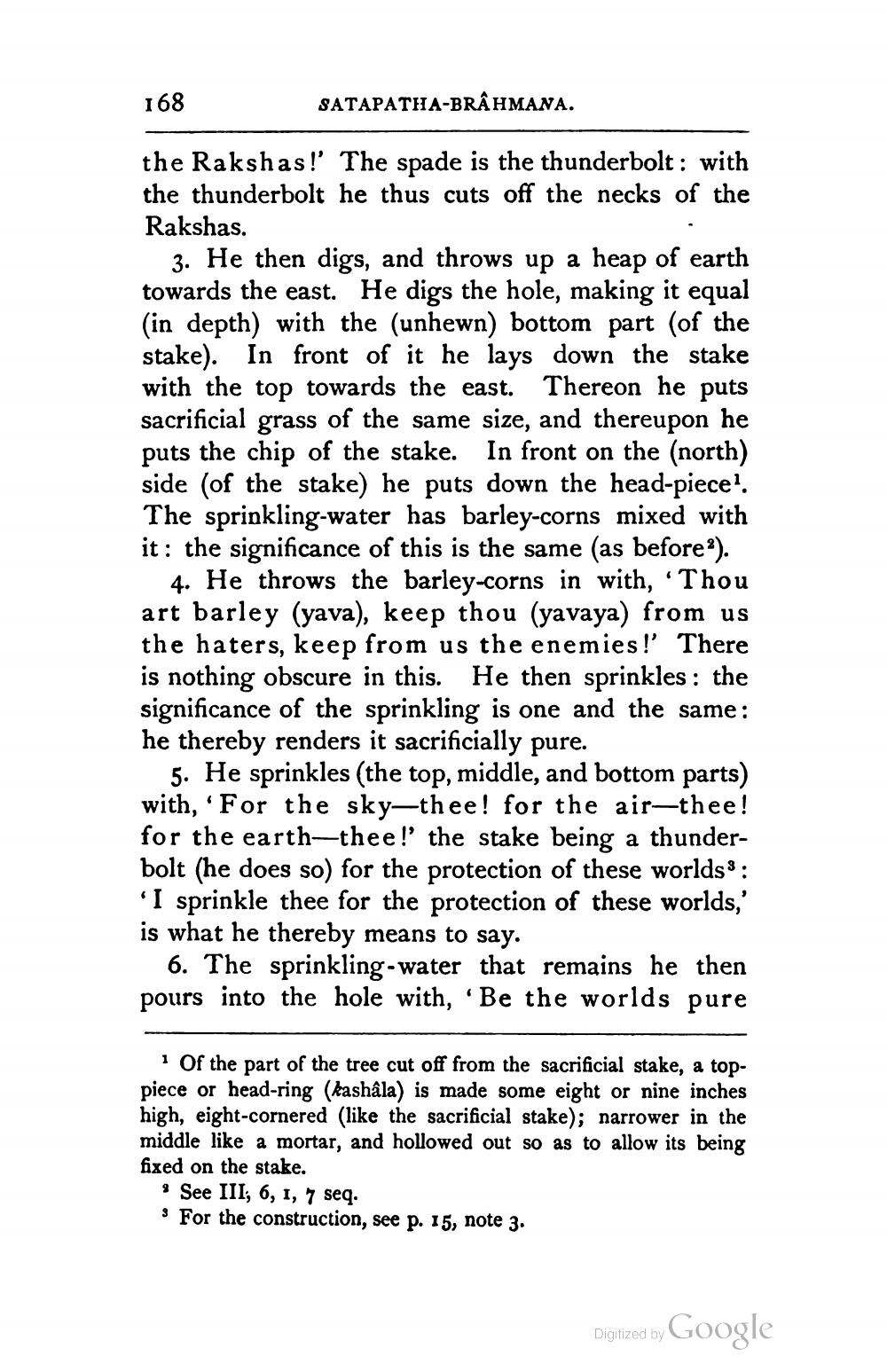________________
168
SATAPATHA-BRAHMANA.
the Rakshas!' The spade is the thunderbolt: with the thunderbolt he thus cuts off the necks of the Rakshas.
3. He then digs, and throws up a heap of earth towards the east. He digs the hole, making it equal (in depth) with the (unhewn) bottom part (of the stake). In front of it he lays down the stake with the top towards the east. Thereon he puts sacrificial grass of the same size, and thereupon he puts the chip of the stake. In front on the (north) side of the stake) he puts down the head-piece!. The sprinkling-water has barley-corns mixed with it: the significance of this is the same (as before).
4. He throws the barley-corns in with, “Thou art barley (yava), keep thou (yavaya) from us the haters, keep from us the enemies!' There is nothing obscure in this. He then sprinkles : the significance of the sprinkling is one and the same: he thereby renders it sacrificially pure.
5. He sprinkles (the top, middle, and bottom parts) with, 'For the sky—thee! for the air-thee! for the earth-thee! the stake being a thunderbolt (he does so) for the protection of these worlds 3 : 'I sprinkle thee for the protection of these worlds,' is what he thereby means to say.
6. The sprinkling-water that remains he then pours into the hole with, 'Be the worlds pure
Of the part of the tree cut off from the sacrificial stake, a toppiece or head-ring (kashâla) is made some eight or nine inches high, eight-cornered (like the sacrificial stake); narrower in the middle like a mortar, and hollowed out so as to allow its being fixed on the stake.
See III, 6, 1, 7 seq. For the construction, see p. 15, note 3.
Digitized by Google




